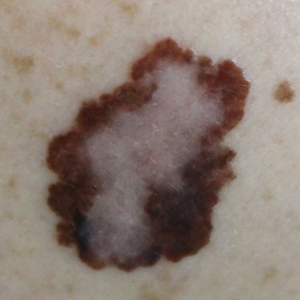
What is skin cancer and what types are there?
Skin cancer is a treacherous cancer because it does not cause any symptoms at first. A malignant proliferation of skin cells occurs, for which the harmful UV light of the sun is primarily held responsible. These UV rays damage the DNA of the cells, which, however, do not die, but instead degenerate and begin to proliferate. Doctors generally distinguish between black and light skin cancer.
Differentiation between black and white skin cancer
Black skin cancer (melanos) is caused by the so-called melanocytes, which lead to a degeneration of the pigment cells of the skin. Melanomas occur particularly frequently on the back in men, while in women it is more likely to affect the leg areas. Black skin cancer can develop from moles, which then change colour and may grow considerably. However, it is more common for black skin cancer to develop from previously healthy skin cells.
Light skin cancer is further divided into the subcategories basalioma and spinalioma. While the first type of cancer usually manifests itself in small veins on the surface of the skin, spinalioma resembles a wart with sometimes characteristic scaling. In particular, all those parts of the body that are exposed to intensive sunlight are susceptible to light skin cancer. These include the nose, forehead area and ears.
Who is particularly susceptible to skin cancer?
Skin cancer is one of the most common types of cancer. Light skin cancer occurs more often than black skin cancer. While more than 200,000 people in Germany are diagnosed with light skin cancer every year, only 21,000 people are diagnosed with black skin cancer. Those who are sensitive to ultraviolet light (UV) are particularly at risk. They should be especially careful with sun protection and avoid intensive sun exposure as far as possible. But people with many moles are also more likely to develop skin cancer on average. Since these can be precursors to skin cancer, they should be examined frequently by a doctor.
What are the causes of skin cancer?
Besides UV radiation, hereditary factors also play an important role in the development of skin cancer. Effective sun protection should therefore help prevent the development of skin cancer. For some time now, young people under the age of 18 in particular have not been allowed to enter solariums, as the UV rays emitted there have been proven to cause cancer.
Effective protection against skin cancer
Lighter skin types in particular need to be more careful with sunlight than darker skin types. In addition to using the right sunscreen, you should also dress appropriately and make sure you wear headgear. Extensive sunbathing in the blazing midday sun should be avoided under all circumstances.
What are the chances of curing skin cancer?
Black skin cancer that has not yet metastasised is usually removed surgically. The earlier the skin cancer is detected, the better the chances of cure. If the cancer has not yet exceeded a thickness of one millimetre in the skin layer, the chances of a complete cure are very good. However, if metastases have already developed in the skin, lymph nodes or bones, the chances of a cure are much worse. As a rule, light skin cancer always has better healing prospects than black skin cancer, as this type of cancer forms metastases much less frequently.
